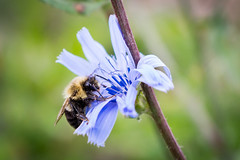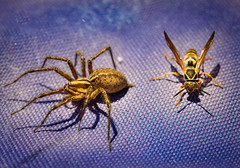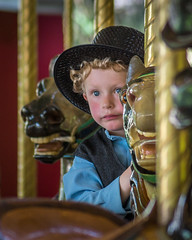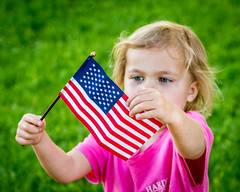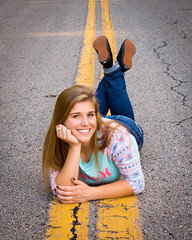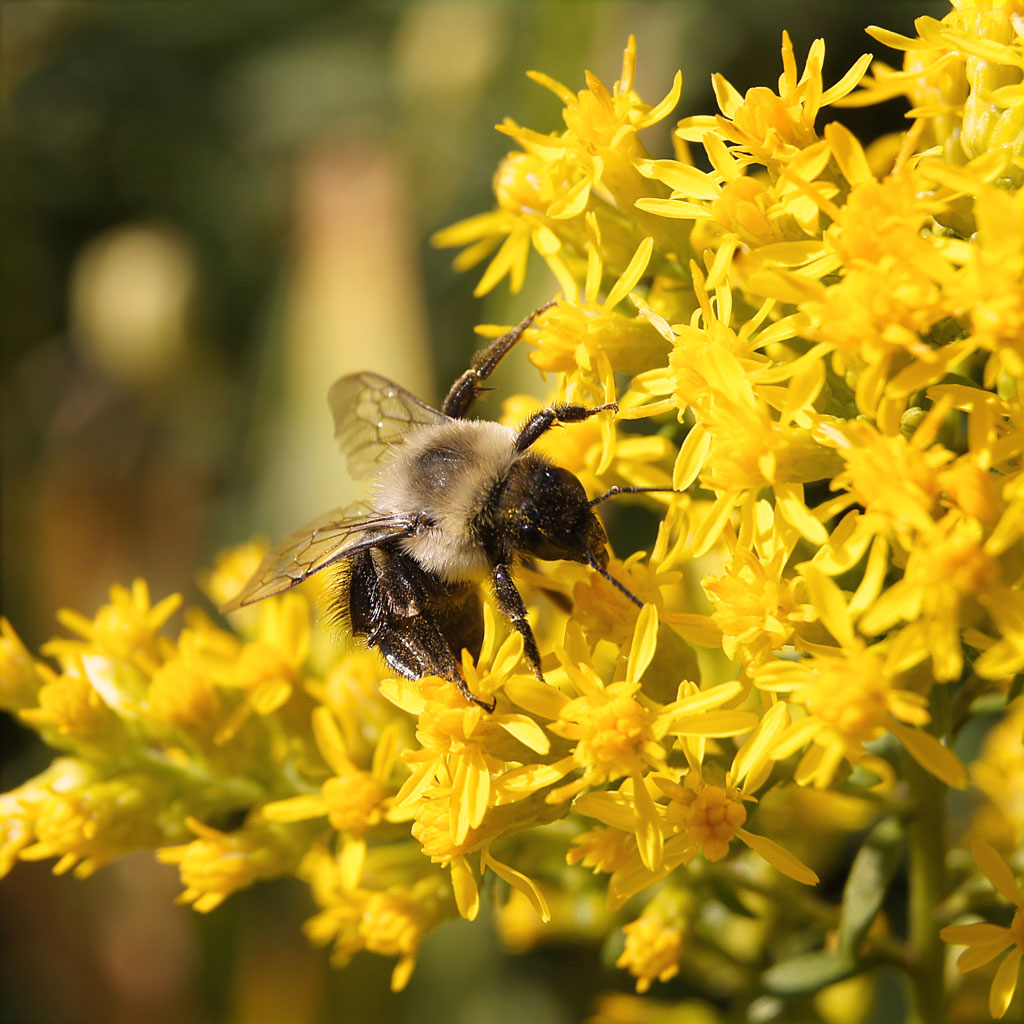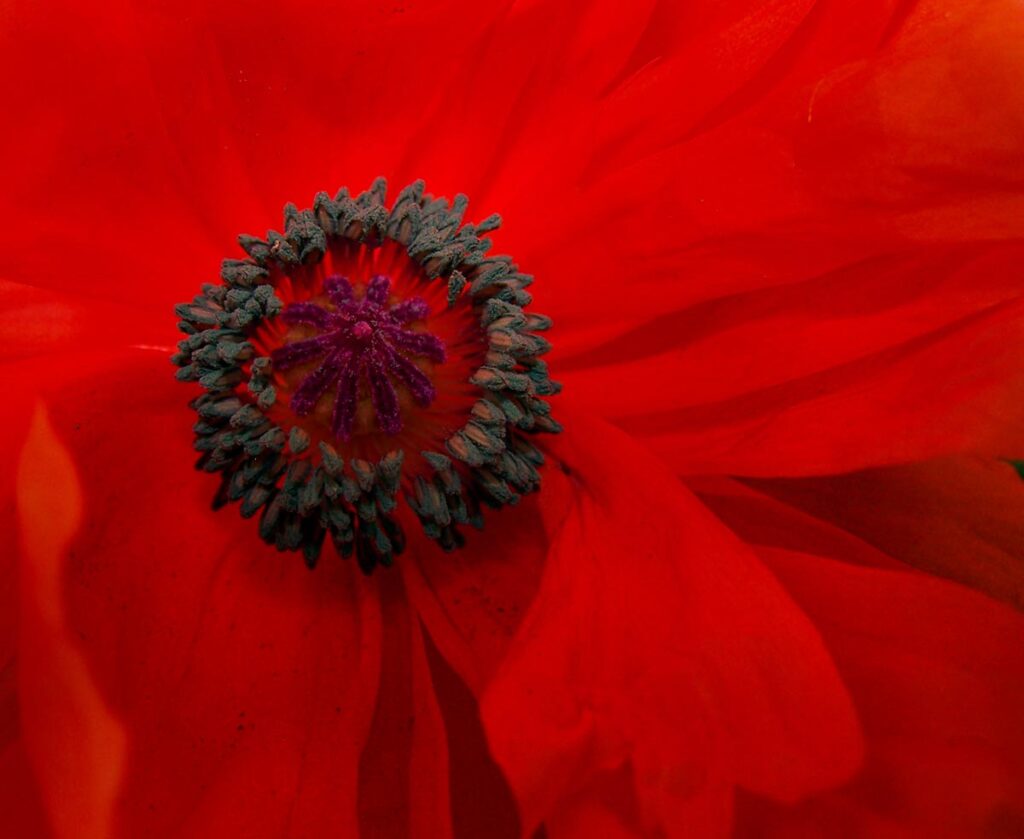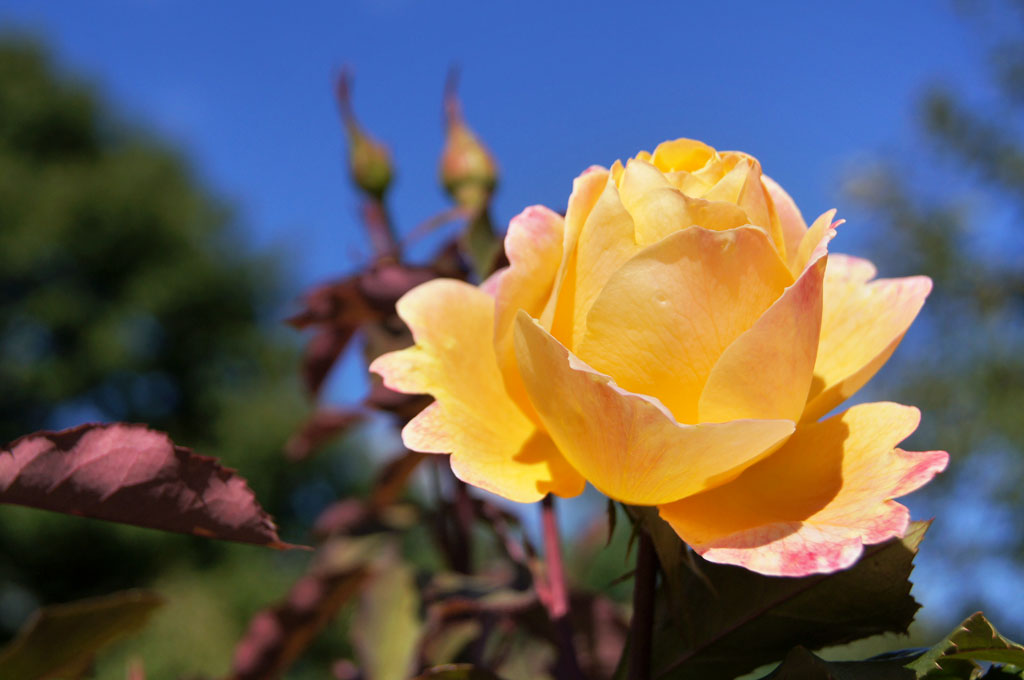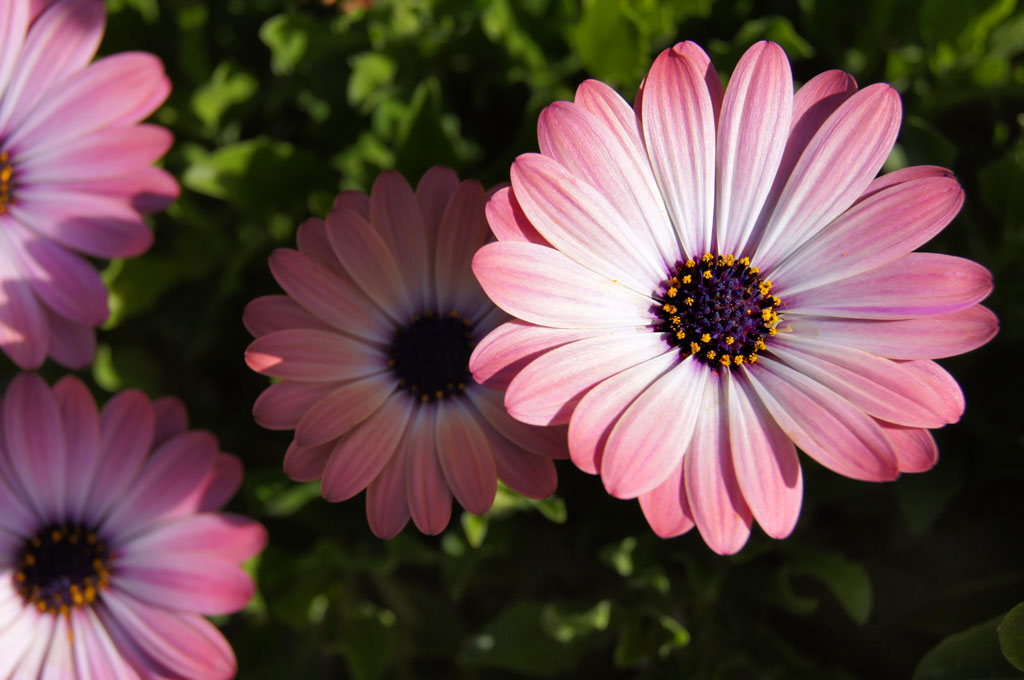Flowers
Guarding the Beauty
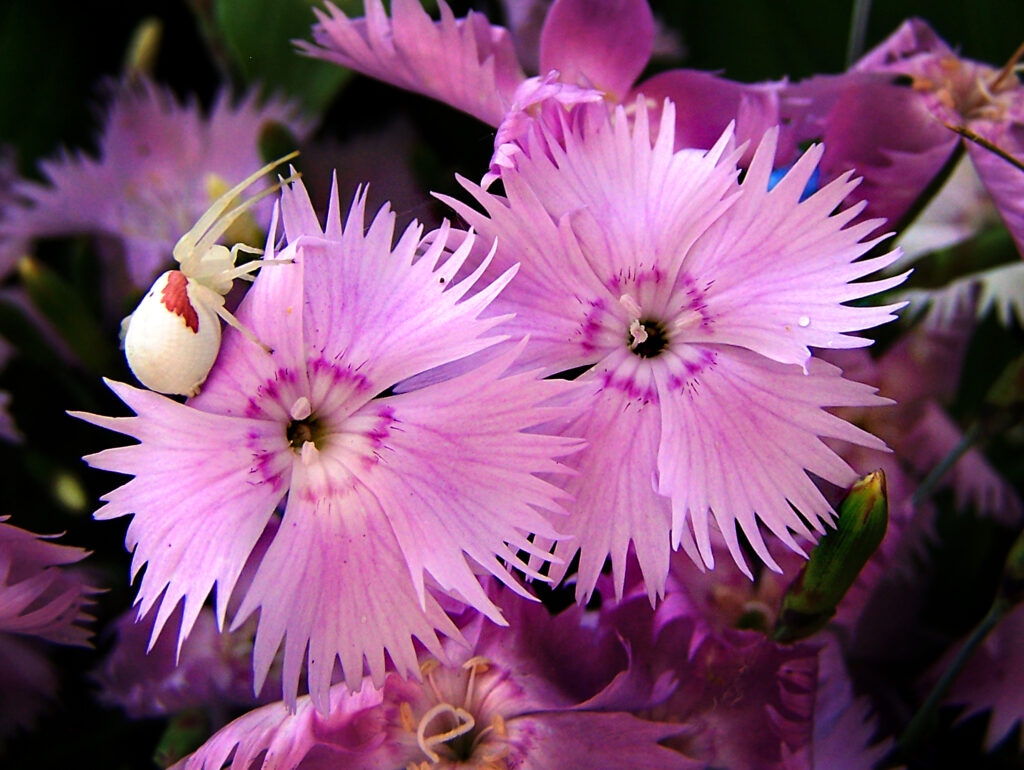 This is kind of a beauty-and-the-beast image. The Dianthus flowers in our yard caught my eye. As I moved in to take the shot, the little crab spider made himself known. I didn’t see him until I was right on top of him. I backed off…then moved in…then backed off…then moved in. When I moved in, he would take an aggressive stance. When I backed off, he would relax. Whatever his strategy was, it must have worked well since, judging by the girth of his tiny frame, I’d say he hadn’t missed any meals.
This is kind of a beauty-and-the-beast image. The Dianthus flowers in our yard caught my eye. As I moved in to take the shot, the little crab spider made himself known. I didn’t see him until I was right on top of him. I backed off…then moved in…then backed off…then moved in. When I moved in, he would take an aggressive stance. When I backed off, he would relax. Whatever his strategy was, it must have worked well since, judging by the girth of his tiny frame, I’d say he hadn’t missed any meals.
This photo was taken several years ago with my old Kodak camera. A little “vintage” Pops Digital for you.
For a closer look, click on the photo.
On Golden Rod
Colorful Queen Ann’s Lace
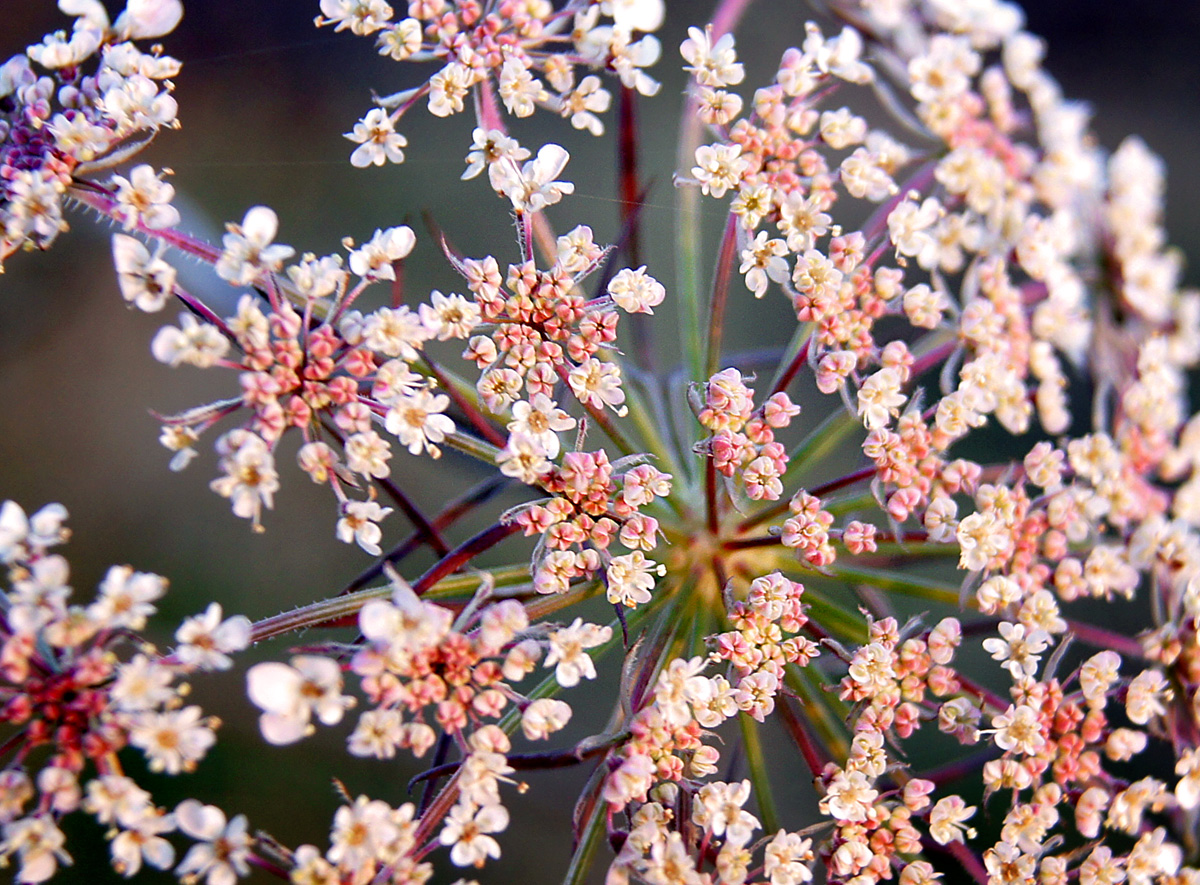 I’m not overly particular about my subjects. I take photos of anything that catches my eye. This was something that caught my eye because I found it unusual.
I’m not overly particular about my subjects. I take photos of anything that catches my eye. This was something that caught my eye because I found it unusual.
This is common Queen Ann’s Lace. Normally the delicate flowers are snow white and create a full bouquet – with little space between the blooms. The color and sparse display for this bunch must be due to the onset of colder weather. Normally the stems are a simple green, not the purplish-red color seen here. (This photo was take this fall.)
You can view a larger version by clicking on the photo.
The Center of Passion
There is something about this image that captivates me. I’d like to say it was taken in some exotic location, but it wasn’t. It is the center of a poppy from the flower bed beside our home.
Of course, it’s the rich, deep red of the petals that initially grab me. However, it’s the purple center, ringed by the dark seeds, that keep me staring.
I realize this is one of those images that either trips your trigger…or not. Feel free to leave a comment, either way.
Click the image to see a larger version.
Botanicals
Thistles on Display
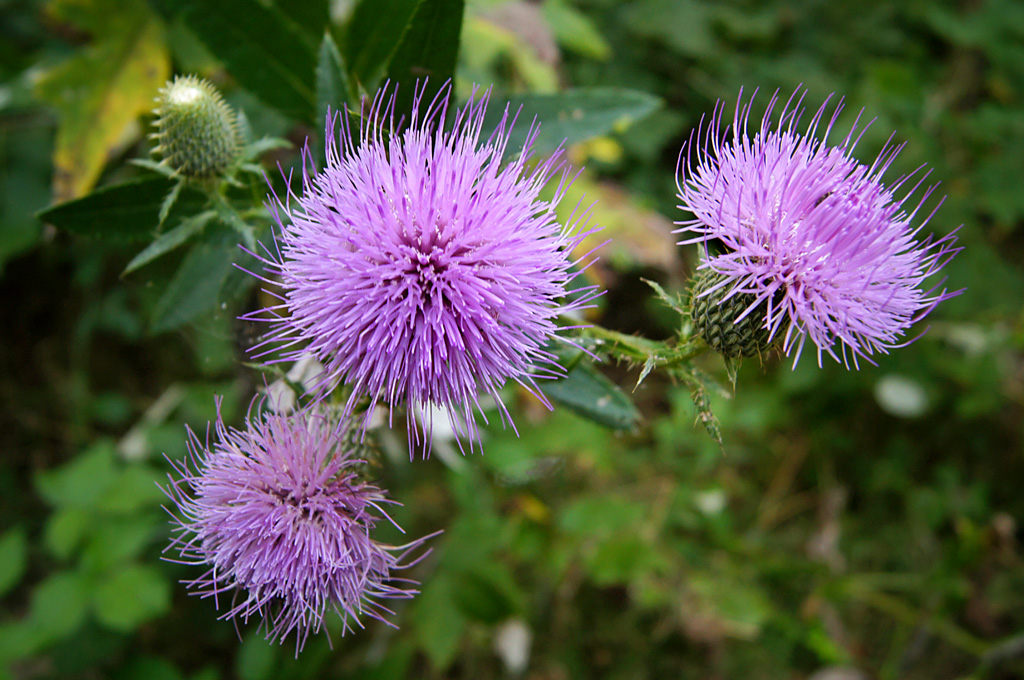
I took a walk through the woods in Missouri and came across this clump of thistles.
I have a difficult time walking outdoors with my camera and not photographing every flower of color I encounter…even if I have a dozen images of the same kind flower…even when they’re weeds.
Here’s a little of what Wikipedia says about thistles…
Thistle is the common name of a group of flowering plants characterised by leaves with sharp prickles on the margins, mostly in the family Asteraceae. Prickles often occur all over the plant – on surfaces such as those of the stem and flat parts of leaves. These are an adaptation that protects the plant against herbivorous animals, discouraging them from feeding on the plant. Typically, an involucre with a clasping shape of a cup or urn subtends each of a thistle’s flowerheads.
In the language of flowers, the thistle (like the burr) is an ancient Celtic symbol of nobility of character as well as of birth, for the wounding or provocation of a thistle yields punishment.
The thistle has been the national emblem of Scotland since the reign of Alexander III (1249–1286) and was used on silver coins issued by James III in 1470. It is the symbol of the Order of the Thistle, a high chivalric order of Scotland. It is found in many Scottish symbols and as the name of several Scottish football clubs. The thistle, crowned with the Scottish crown, is the symbol of seven of the eight Scottish Police Forces (the exception being the Northern Constabulary). The thistle is also the emblem of Encyclopædia Britannica, which originated in Edinburgh, Scotland. Carnegie Mellon University features the thistle in its crest.
According to a legend, an invading Norse army was attempting to sneak up at night upon a Scottish army’s encampment. During this operation one barefoot Norseman had the misfortune to step upon a thistle, causing him to cry out in pain, thus alerting Scots to the presence of the Norse invaders.
You can see a larger image of the thistles by clicking on them.
Sunshine on a Stalk
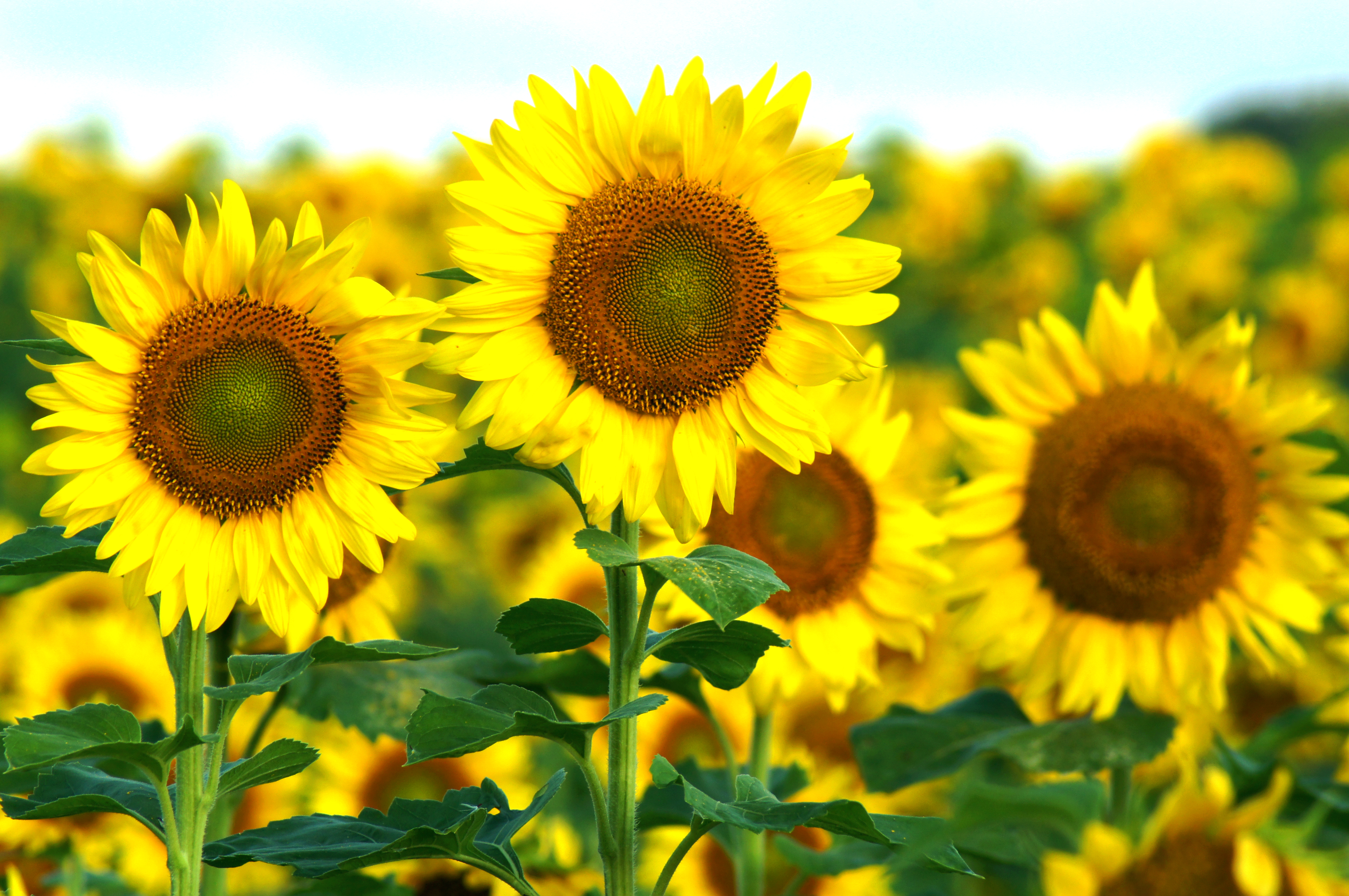
Keep your face to the sunshine and you cannot see the shadow. It’s what sunflowers do. – Helen Keller
The sunflowers are in bloom! In our area, we are blessed with several fields of sunflowers every summer – thanks to our good neighbors, the Kuehl Seed Farm.
When the field is on a main highway, it is quite common to see people pull over, jump out and snap a couple of pictures with a digital camera. And who can blame them. A field of sunflowers in full bloom is so bright and cheerful it’s natural to want to take it home with you. This field of flowers is on Highway 42, Just north of Kewaunee, WI. (While I was taking these photos at least four other cars stopped to do the same.)
Share some “sunshine on a stalk” with friends. Send them a link to this site or simply Like/Share us on Facebook with the convenient button below.
(Click either image to see a larger version.)
Messy Hands
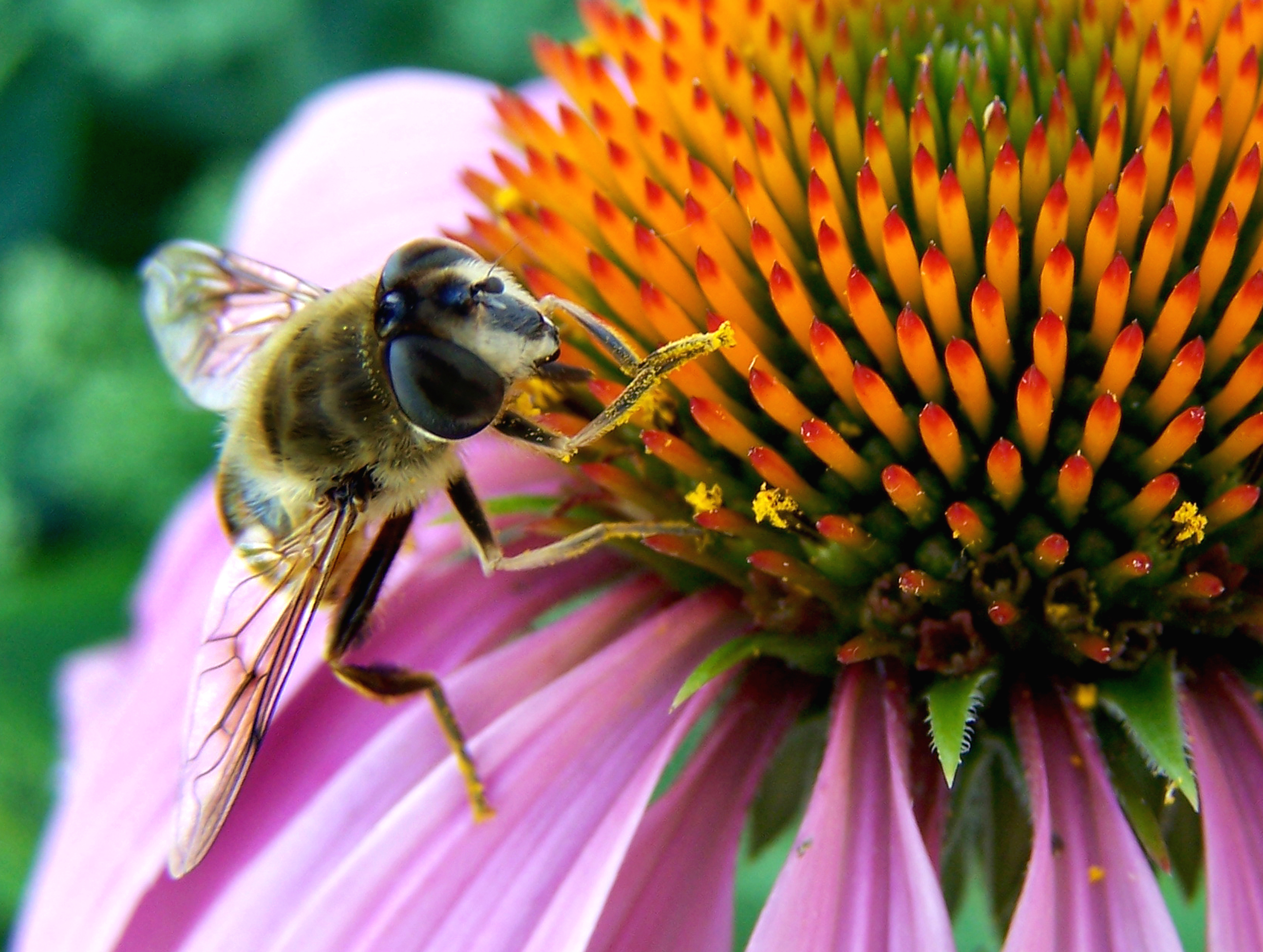
This is an image that dates back to 2006. This photo was the initial inspiration for my experimentation and reasonable success with macro photography.
My old camera, a Kodak Easyshare DX7590, did an exceptional job with macro shots. When I saw what was possible – after taking this image – I started to major on the minors. I can spend hours crouched down by a flower bed, moving slowly, trying to be unnoticed while I position my camera as close as possible to any tiny creatures I can find. I was just a few inches from this bee when I snapped this photo.
I love seeing the normally, unseen details of God’s creation. For instance, in this image, I am fascinated by the bee’s wings, the pollen on the flower and bee’s legs, that little dongle thing protruding from the bee’s head, it’s eyes and the orange tipped spears of the cone flower.
If you find this image appealing, please feel free to share it with friends. (If you’re on Facebook, simply click one of the Facebook links below this story.)
To see a larger version and even more detail, click the photo.
All of the photos I post are available for purchase. If you’d like to buy one, click on the blue “Buy this Online” bar below for a variety of print and frame options or contact me for digital purchase and licensing options.
Petunias
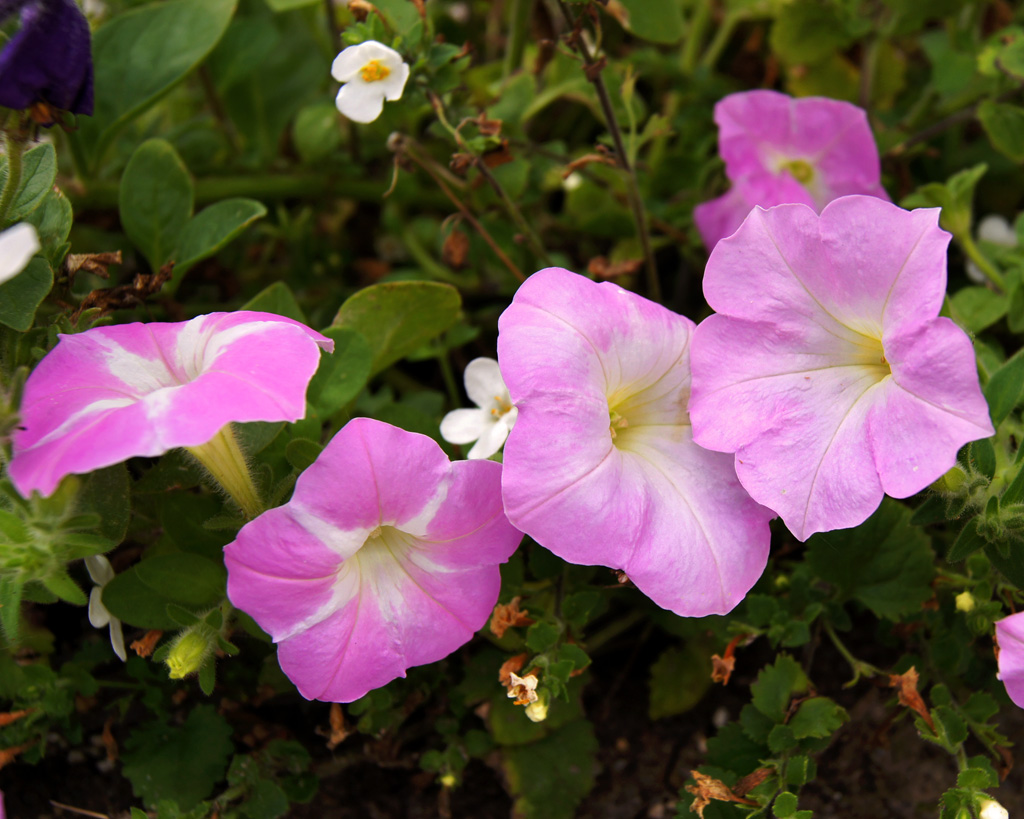
There is uncommon beauty all around us that we often miss because we fail to “stop and smell the roses.” These aren’t roses, but petunias that Sara has in a planter by the back door. I pass by them several times a day with hardly a notice.
Well, I stopped for a moment to notice…with a camera in my hand, of course.
For me, that’s one of the great benefits of photography. It increases the awareness of my surroundings. With a camera in my hands, my eye becomes acutely sensitive to beauty, symmetry, bold colors, subtle hues, the dramatic, the sublime. It is a good thing for my soul.
In your all-to-busy life, every once in awhile, pick up a camera and take some time to stop and smell (and snap) the roses.
(To see a larger version of this image, click on it.)
Hollyhocks in Digital Paint
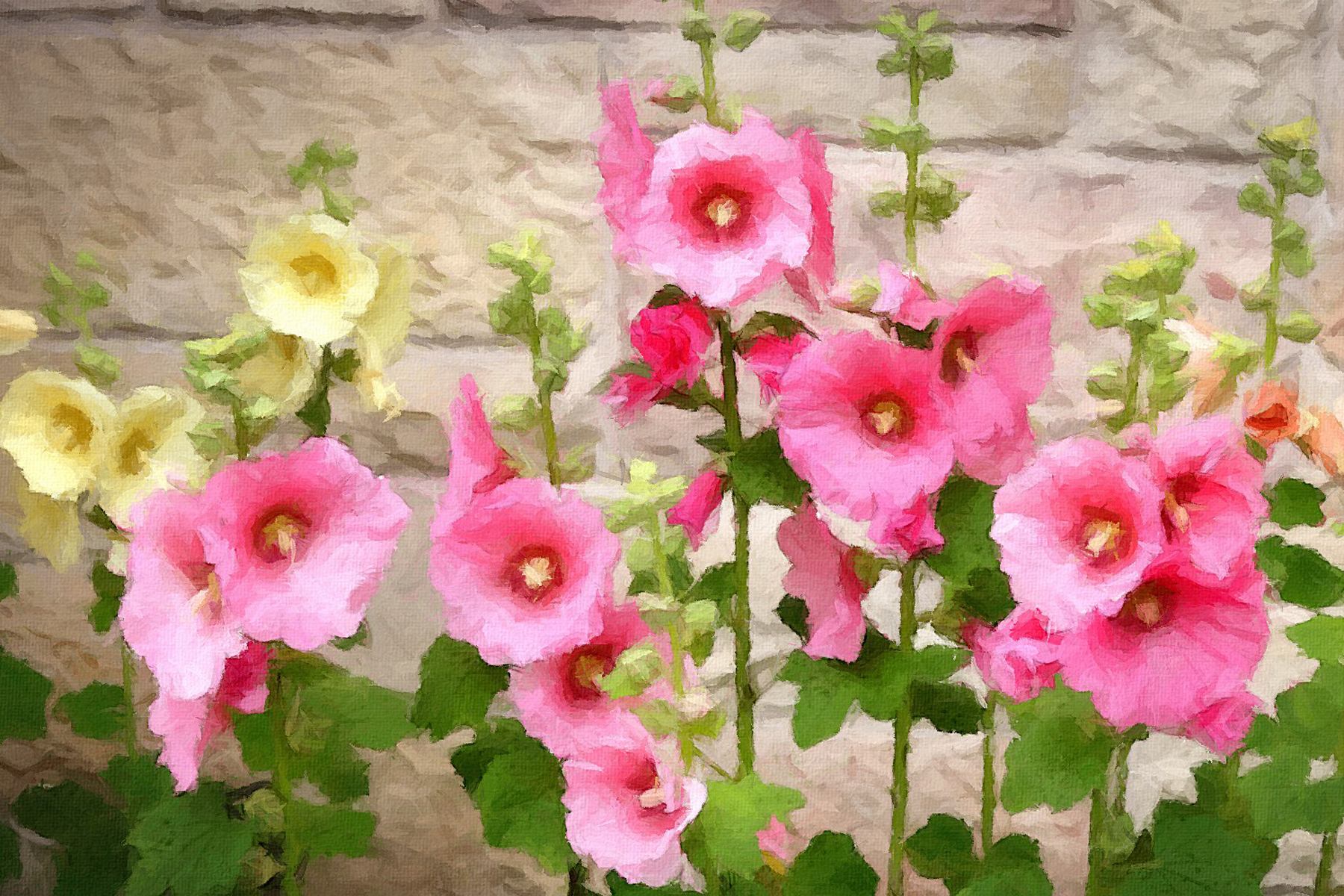
One of the things I love about digital photos is the way you can easily manipulate the images. I almost never post a photo straight out of the camera. There’s always tweaking to be done. It might be simply cropping the image for maximum effect, straightening a crooked image, correcting the color, contrast, brightness, etc. Even beyond making a photo look it’s best, you can easily make a photo look totally different. This is a perfect example.
The other day I returned a book to the Algoma Public Library and on my way in I noticed a group of hollyhocks. My artist’s eye thought that would be a good image to experiment on. I liked the colors and the texture of the stone wall behind them. To the right is the original photo I snapped. I left myself plenty of room to crop it. When I look at the original, I really don’t see anything particularly special about these flowers.
I opened the image in Photoshop and tweaked the brightness and contrast, cropped it, then saved it. I then opened up another image editing software called FotoSketcher. It’s a free program I recently found and am just starting to play with. It allows you to convert a digital photo to a variety of different art styles, such as pencil sketch, oil pastel, watercolors, etc. It also has a number of options for aging a photo, increasing saturation and adding a frame or text.
I imagine any real artist who works with oils would probably snicker and scoff at this type of creation. Yet, if I were to actually pick up a paint brush or pastels, you’d get a lot of stick-people level images. Not being familiar with those kind of mediums, I really don’t know what I’m doing with things like brush size, number of strokes, edge intensity and such, so I trust the software to do the heavy lifting. There are a lot of adjustments the software allows you to make. I just fiddle around until I find something that appeals to me. A true artist, could probably do much better.
On the image above, I simply selected one of the oil painting modes and fiddled.
My artistic medium is digital photography, and I don’t expect that to change, but adding another digital twist to the images and a free tool to the digital tool box keeps things interesting.
If you’re interested in the FotoSketcher software (remember, it’s Free) you can down load it here: http://www.fotosketcher.com/
To see a larger version of the main image at the top of this post, simply click on it.






